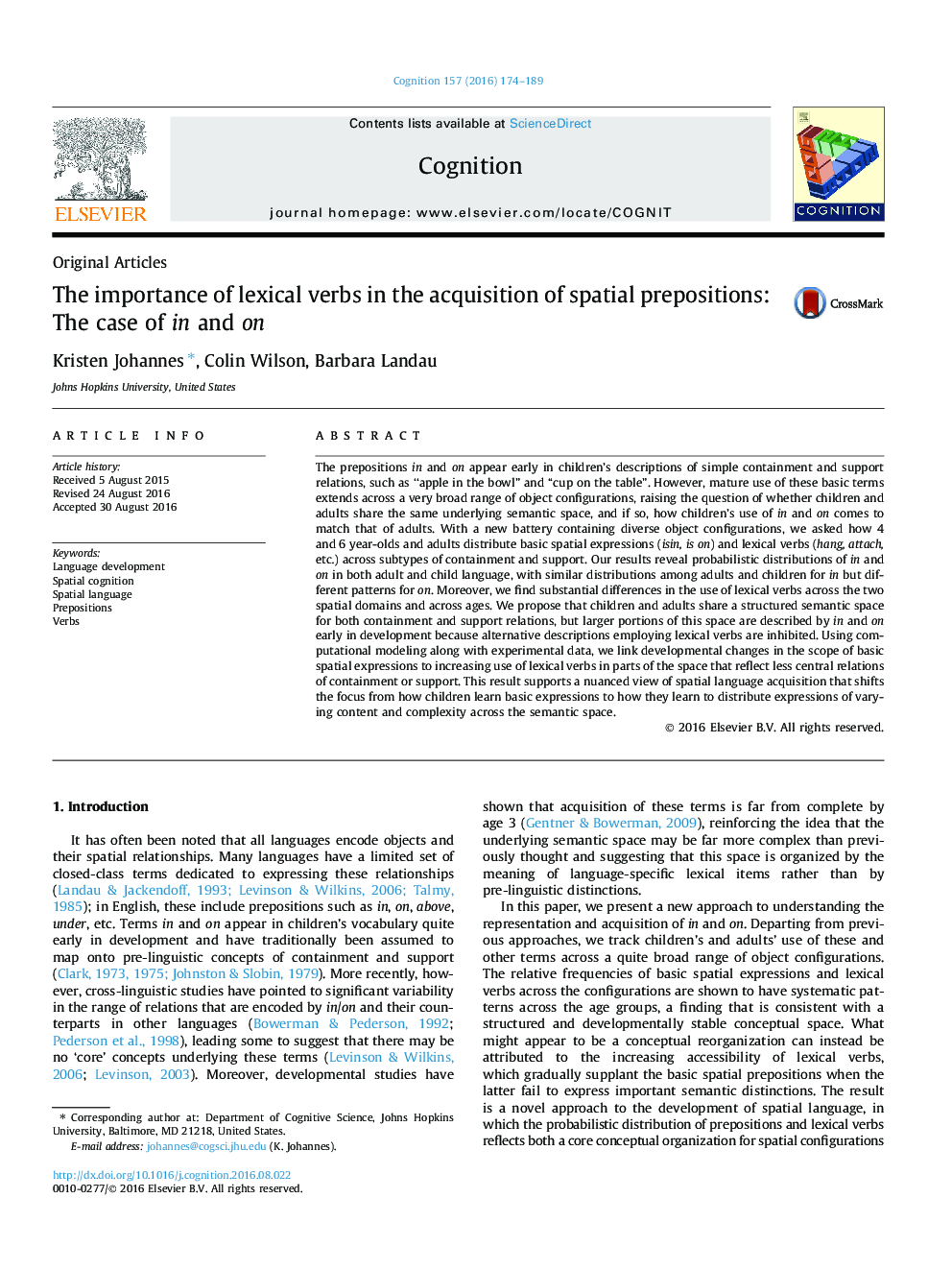| Article ID | Journal | Published Year | Pages | File Type |
|---|---|---|---|---|
| 7285757 | Cognition | 2016 | 16 Pages |
Abstract
The prepositions in and on appear early in children's descriptions of simple containment and support relations, such as “apple in the bowl” and “cup on the table”. However, mature use of these basic terms extends across a very broad range of object configurations, raising the question of whether children and adults share the same underlying semantic space, and if so, how children's use of in and on comes to match that of adults. With a new battery containing diverse object configurations, we asked how 4 and 6 year-olds and adults distribute basic spatial expressions (isin, is on) and lexical verbs (hang, attach, etc.) across subtypes of containment and support. Our results reveal probabilistic distributions of in and on in both adult and child language, with similar distributions among adults and children for in but different patterns for on. Moreover, we find substantial differences in the use of lexical verbs across the two spatial domains and across ages. We propose that children and adults share a structured semantic space for both containment and support relations, but larger portions of this space are described by in and on early in development because alternative descriptions employing lexical verbs are inhibited. Using computational modeling along with experimental data, we link developmental changes in the scope of basic spatial expressions to increasing use of lexical verbs in parts of the space that reflect less central relations of containment or support. This result supports a nuanced view of spatial language acquisition that shifts the focus from how children learn basic expressions to how they learn to distribute expressions of varying content and complexity across the semantic space.
Related Topics
Life Sciences
Neuroscience
Cognitive Neuroscience
Authors
Kristen Johannes, Colin Wilson, Barbara Landau,
